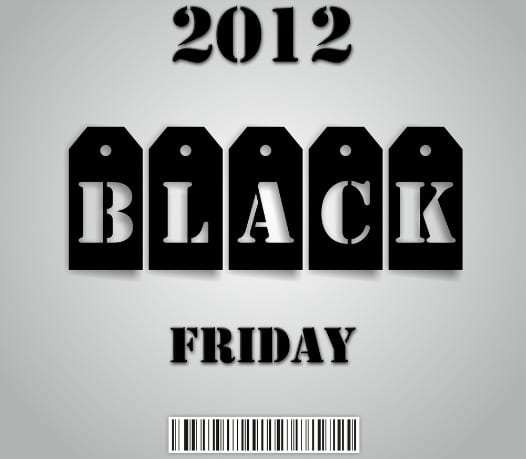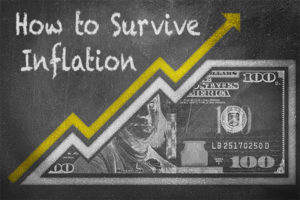Black Friday: America’s Holiday Tradition at Thanksgiving
There’s nothing in America quite like Black Friday. It’s an annual day of overabundant consumerism, a day of great deals and great mayhem.
And it’s famous for holiday bargain shopping and infamous for bargain shoppers’ competitive – and often dangerous – antics.
Falling on the day after Thanksgiving, Black Friday symbolizes the start of the holiday shopping season, with stores across the country vying for customers and offering the best prices of the year.
There are tricks to getting the best deals possible. Shopping around and doing research as well as shopping online can all help consumers hold onto their money. The best way to save money is, of course, to not spend it at all. But then that really wouldn’t be Black Friday.
Black Friday: The Facts behind the Tradition
Black Friday dates back to the late 1800s and early 1900s, when major department stores like Macy’s began advertising holiday specials on the day after Thanksgiving. The tradition gained momentum for several decades, especially in the Northeast. Police officers dreaded a day that drew throngs of people and created traffic jams.
By the 1960s, officers in the Philadelphia area were calling the day “Black Friday,” a name that slowly caught on throughout the country.
As the moniker – and the tradition – swept the nation, it became more and more fitting. Over time, the day’s shopping agenda became nearly impossible to avoid, with customers so eager to get through store doors that employees and customers could be overrun – or injured.
Countless people suffered injuries – and some people actually died – in their hunt for bargain prices. Walmart is synonymous with such incidents after a temporary employee died in 2008. An estimated 2,000 customers – many of whom camped out overnight in front of the store – forced their way into a Walmart in Long Island, New York, before the store opened. Employee Jdimytai Damour was trampled and killed, and several other shoppers required hospitalization for injuries they incurred.
Since then, not much has changed. In 2012, shoppers turned to violence as a means to beat out fellow customers and gain access to coveted merchandise Walmart stores around the country. Incidents ranged from shootings to a mass pepper-spray attack.
How Much Do People Spend?
In our country’s consumer-based society, some shoppers put spending and saving at the top of their priority lists. Black Friday chaos, incidental or otherwise, comes in the name of consumerism. And it seems to get worse each year.
According to the National Retail Federation (NRF), an estimated 226 million Americans shopped in person or online on Black Friday in 2012. That’s equivalent to nearly 75 percent of the U.S. population. (And this was up from 212 million shoppers in 2010.)
Not surprisingly, Black Friday isn’t just on Friday anymore. Some stores opened their doors for Black Friday deals on Thanksgiving evening to promote more spending.
And the technique worked. On average, each shopper in 2012 spent just shy of $400 over the course of the Black Friday weekend (Thursday through Sunday). This, too, was an increase over the previous year’s average of $365, according to the NRF.
These pre-holiday splurges most frequently include clothes and electronics. More than half of shoppers bought clothing and accessories, while nearly 40 percent bought electronics, according to NRF’s survey. Other popular purchases included toys (33 percent of shoppers), gift cards (23 percent), home décor (21 percent) and jewelry (14 percent).
Unfortunately, for too many of the Black Friday shoppers, the spending average is money they simply don’t have. Some annual shoppers are in the habit of putting purchases on their credit cards and willing to try to dig out of debt in the new year.
Black Friday 2012: What to Expect
NRF estimates this year’s total spending will be slightly higher than last year’s, that each holiday shopper will spend about $750 this season, up from last year’s $741. Overall holiday sales are predicted to top $586 billion.
Experts expect a large portion of this spending to take place over the Thanksgiving weekend. That’s hardly surprising, given that less than 20 percent of shoppers are expected to hold off on their holiday spending until December.
About 52 percent of shoppers expect to make at least some of their purchases online, up from 47 percent last year. Online and in stores, purchasing trends will stay roughly constant over last year.
Popular gifts? Clothing, electronics and entertainment products like books, movies and video games.
Tips and Tricks for Black Friday and Holiday Shopping
It’s easy to get caught up in the craze of Black Friday sales – and then to spend more money than you should. But there are ways to avoid overspending and accumulating debt this holiday season. Among them:
- No impulse purchases. Instead, make a list of people you need to buy for and then try to come up with a corresponding item. Don’t buy things that aren’t on your list. Also avoid the temptation of adding people to the list.
- Set a budget. Decide ahead of time how much you’re willing – or able – to spend. Keep a running total, and when you reach your budget limit, stop shopping. If you’re working on a small budget and are shopping in person, bring cash. That way, you can bring exactly how much you’re willing to spend, and you’ll be able to say no to purchases more easily when you see you have no cash left. However, it may not be wise to carry large amounts of money on you, so consider using a credit card for larger purchases.
- Do your homework. Pay attention to advertisements and specials at your favorite stores, and check the websites of stores you plan to visit. Make notes on where you can find the best deals for the items you plan to buy. For big ticket items like electronics, it pays to do more research like comparing brands and models from various stores.
Consumerism is a long-standing and ever-growing American tradition, and Black Friday tends to show off both the best and worst aspects of it simultaneously. While many criticize the day, even more continue to line up for once-a-year deals. Critics can take comfort in knowing that – for now – Black Friday only comes once a year and can be avoided fairly easily.
For those who want to take part on Black Friday, splurging on occasional luxuries don’t have to mean accumulating more credit card debt. Instead, know your fiscal limits, save up money and decide beforehand that you won’t overspend.


















